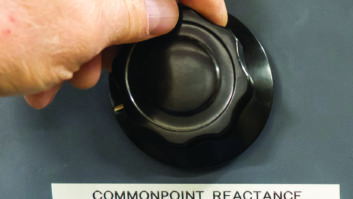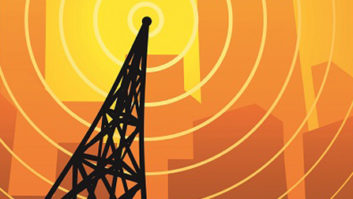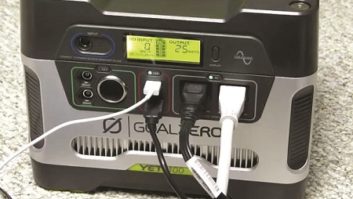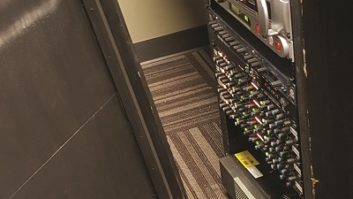In a more golden age of AM broadcasting, problematic monitor points struck fear into the hearts of station engineers. The significant level of agitation and disquietude felt back then just doesn’t seem to be around anymore. Whether that is due to ABIP participation, budget cuts at the Federal Communications Commission or other factors is a philosophical discussion for another day. The fact remains that problematic monitor points are rule violations, and issues with them must be corrected in order to be rule -compliant.

Boiling it all down, only three factors are the genesis of a monitor point problem. While more than one may be present in a given situation, any issue can ultimately be attributed to a problem with the antenna, a problem with the point itself, a problem with the measurement, or some combination of more than one factor. The challenge is to identify the cause, and then correct the issues in a timely and efficient fashion. (Note that while an unusually low monitor point value is not necessarily a rule violation, it may be indicative of a performance issue, and so should be investigated.)
Regular monitor point measurements are the preferred course of action. The current rules require that the monitor points be run “as often as necessary” to ensure that they are within limits for those arrays with approved sample systems, and at least once every 120 days for unapproved systems. The failure to know the locations and conditions of the monitor points when the inspector arrives is typically considered poor form and an embarrassment. In the event that it is the commission checking out an interference complaint, you can bet your monitor points have already been checked before their arrival at the station.
When I worked for the late Don Markley, he told me about a station in eastern Illinois where the engineer called him and said a monitor point was “gone.” As it turns out, actually, the monitor point was “gone” due to strip mining in the vicinity. No doubt, this is a hyperbolic example of environmental change, but over time, some fluctuation in the environmental conditions should be expected.
BEGIN YOUR INVESTIGATION
With that in mind, the absolute last thing you should do is to start turning on the cranks to bring the monitor point back into compliance without looking a little deeper into the array. When acquiring data concerning the current state of the antenna system, it is good practice to work outward from the array. The most obvious place to start is with the cranks. Are the cyclometer readings consistent with historical values? If not, continue avoiding the temptation to adjust them back to the perceived norms.
If no issues are found here, slide over to the common point and transmitter power output meters. In a directional antenna, the input power to the array will be greater than the nominal power on the license. Typically for nominal power values of less than 5 kW, the input power to the array is 8 percent greater, and for those in excess of 5 kW, 5.3 percent greater. These increases are utilized to offset the array losses. Check the measured values against the license or other documentation to ensure consistency. There are some arrays with odd designs that have efficiency problems, and so the authorized input power will not necessarily agree with these values.
Next, examine phase monitor readings. Operating parameters are on the license, and actual phase monitor indications should have a ratio within 5 percent, and phase within 3 degrees. When looking at the parameters, ensure that you are accurately measuring the sense of the phase. Digital monitors indicate the sense on the display, whereas on one of the common analog types, the sense button must be pushed. When pushing this button, if the meter moves to the right, the phase is leading the reference tower, while left movement indicates a lagging phase. Extra care must be taken when close to 180 degrees, in which case an extra length of cable can be inserted.
If unsure about the condition of the phase monitor, one of the samples can be connected to all the inputs using an assortment of short cables and tee type adapters. When doing so, each input on the antenna monitor should indicate a similar loop ratio, but the phase will shift slightly as you go through the test jumper cables, since each cable adds a bit of delay. One channel at significant variance by this method may be indicative of a problem with the phase monitor.
The next step should be checking the base current ratios. Although no longer required by the commission to be measured, base current ratios provide an additional crosscheck on the health of the array, and are quite valuable. To calculate the ratios, the current at each tower is divided by the measured value at the highest current tower. The actual current values may vary over time and seasons depending on the ground system health, but you should find the ratios remaining constant. While checking the base currents, also inspect components in the ATU cabinets, and ensure there is nothing problematic.
If everything here looks good, and the parameters are within tolerances and expected norms, move further out to the monitor point itself. Are there any noticeable environmental changes in the vicinity, and what is the meter orientation? Orientation of the meter should be towards the station, with off-axis orientations likely indicative of some environmental disturbance like re-radiation. If so, perform a visual inspection of the vicinity to identify potential culprits such as towers, power lines, or other metallic structures. Re-radiation is identified by orienting the meter at right angles to the station in the vicinity of the offending structure.
The reality is, points sometimes just go crazy, and so if nothing is identified at this point, run a skeleton proof on that radial. Take a few measurements either side of the monitor point along its azimuth at points listed in the last full proof of performance, which should be in your public file. After obtaining these measurements, divide each by the field strength in the proof to obtain a ratio. For no changes to have occurred, each these ratios need to be within a few percentage points of unity.
If the bulk of the point ratios are consistent, but the ratio at the monitor point is vastly different, then a problem with the point is likely, and a new one should be selected according to Section 73.158 of the rules.
Conversely, when the ratio at the monitor point is consistent with those at other locations, make an analysis of the measurements by determining the average of these ratios. Multiply this average by the value indicated on the measurement graph in the proof, and compare to the authorized value on the radial making sure the units are consistent. If the resulting product exceeds the authorized pattern limit, the pattern may be misadjusted.
At this point, checking with your engineering consultant may be worthwhile, as a deeper issue may be present.
The proof of performance will also contain other useful information. The field strength measurements used as a basis for the proof are tabulated in the proof, including the measurement dates, which may provide some insight into monitor point readings and seasonal variances. If the original measurements were obtained during summer months, and the array was tuned close to, or at, the limits, then seasonal variations may exist that float the field strength value above the limit. It is typically prudent, therefore, to tune arrays with monitor points 10-15 percent low to allow for these seasonal variations.
SELECT A NEW MONITOR POINT
Ultimately, if it becomes necessary to select a new monitor point, do some planning. Check alternate points for environmental issues that may cause problems downstream. Are there other power lines and towers in the vicinity? How about pipelines? Such locations should probably be avoided.
Look at the plot in the proof for the radial in questions. Find points in the vicinity of the current monitor point that provide a good fit to the curves. Points that are outliers, either high or low relative to the trend, typically should be avoided, as should ones with potential access issues.
As a side note, one of my favorite locations to put a monitor point, if possible, is in a cemetery. Nothing changes, and the local environment is good as long as the sun is up.
When changing a monitor point, accurately describe the route to that monitor point, from either the transmitter or the previous point. Additionally, a photograph of the point and the meter in the correct measurement position is required. This photograph must show landmarks and features that can be viewed throughout the year. GPS coordinates are also extremely valuable, and should be provided, included the map datum, in the description to the monitor point provided to the commission.
Remember that a monitor point above its limit is not necessarily indicative of a problem with the antenna itself. Similarly, a clean bill of health should not necessarily be assumed if all monitor points are well below their limits. When one or more go wrong, resist the temptation to starting turning cranks, and look deeper into the situation.












